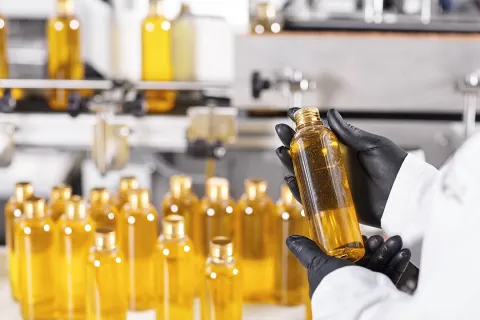
The European Union (EU) has strict regulations in place for cosmetic labeling , which are designed to protect consumers and ensure the safety and quality of cosmetic products. As a cosmetic manufacturer, brand owner, or supplier looking to enter the EU market, it is crucial to understand these regulations and ensure compliance in order to avoid legal and reputational risks. In this blog, we shall explore key the aspects of cosmetic labeling compliance in the EU, highlighting the mandatory information and best practices to help you navigate the complex Regulatory landscape.
Mandatory Information for Cosmetic Labels
The EU Cosmetic Regulation (Regulation [EC] No. 1223/2009) outlines the mandatory information that must be included on cosmetic labels:
- Name and Address of the EU Responsible Person (RP): The EU RP is a legal person based in the EU, who acts as the unique representative of the manufacturer throughout the EU. If you are based outside the EU, you must designate an RP based in Europe to launch your products in the EU market.
- Country of Origin: If the product is made in Europe, the country of origin is not mandatory. However, if the product is imported from countries outside of the EU, the country of origin must be mentioned.
- Nominal Content: The nominal content of the product at the time of packaging, given by weight or volume, must be included on the label.
- The Date of Minimum Durability (DOMD) and Period After Opening (PAO): The Date of Minimum Durability (DOMD) must be indicated using the “hourglass symbol” or the words, “best used before the end of,” if equal to or below thirty (30) months. For products with a DOMD exceeding thirty (30) months, the “open jar symbol” indicating the PAO must be used.
- Precautions for Use: Certain precautions for use and warnings are mandatory in specific cases, depending on the type of cosmetic product and ingredients used.
- Batch Number: The batch number for manufacturing or the reference for identifying the cosmetic product is mandatory.
- Product Function: The function of a product must be clearly indicated to prevent any misuse.
- List of Ingredients: The list of ingredients must be preceded by the term “ingredients” and listed in decreasing order of weight, except for ingredients below 1%.
Best Practices for Cosmetic Labeling Compliance
To ensure compliance with EU cosmetic labeling regulations, you must follow these best practices:
- Appoint an EU RP: Designate an EU-based RP to guide you through the EU compliance process and ensure that your products meet the Regulatory requirements.
- Compile a Product Information File (PIF): Maintain a living document with all the safety information on your products, including laboratory testing and safety assessment reports.
- Verify Compliance with Your Labels: Ensure that your product labels and packaging meet the requirements specified under the EU Cosmetic Regulation.
- Notify Your Products to the Cosmetic Product Notification Portal (CPNP): Submit comprehensive information on your products to the CPNP before placing them on the EU market.
- Keep up with Regulatory Updates: Remain updated on Regulatory changes and take the necessary steps to ensure that your products remain compliant.
To conclude, ensuring cosmetic labeling compliance in the EU market requires careful attention to detail and adherence to Regulatory requirements. By understanding the mandatory information required for cosmetic labels and best practices for compliance, you can navigate the EU market with confidence. Stay updated on Regulatory changes and consult Freyr’s Regulatory experts to ensure a smooth entry into the EU market.









